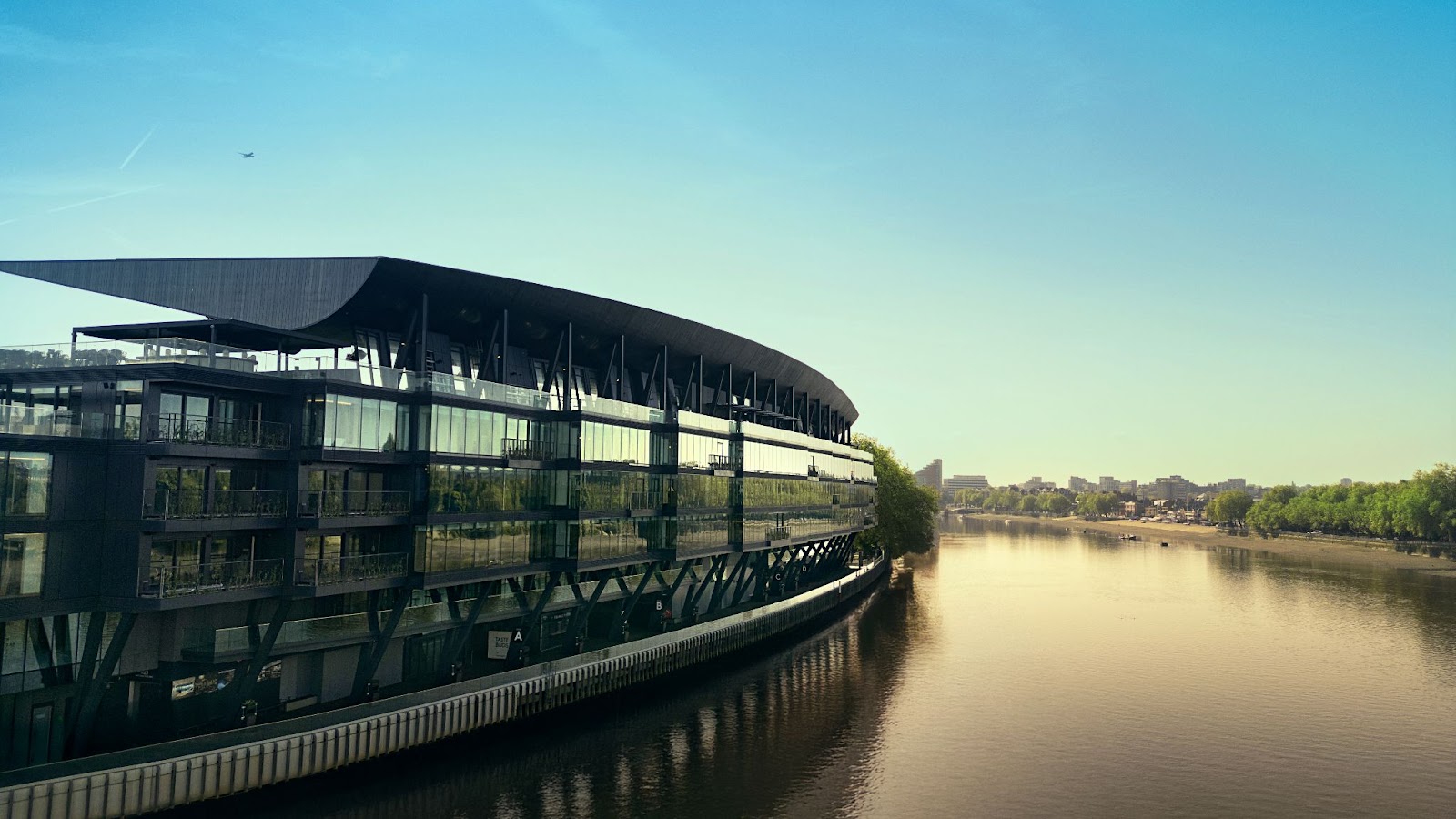The first of Mitterrand’s grands projets, the Arab World Institute was born of an unlikely marriage between a politically charged brief and an architect with a penchant for nightclubs and radical ideas.
The south-facing elevation reads both as an obvious nod to traditional Arab architecture and a wall of giant cameras (ph: Imagodens – stock.adobe.com).
There’s long been a story in certain architecture circles that Jean Nouvel was, in his younger days, a particular habitué of Parisian discotheques. The drama of the dance floor; the air of confusion and possibility; the play of darkness and light—laser-like, slicing through dense layers of artificial fog, catching figures in stroboscopic flashes—this, if the rumour be true, was the architect’s element, the place where he came alive night after night. In fact, it might have been more than that.
There’s always been something a little bit gloomy-glam about the architect’s work. Landmark designs like his Torre Agbar in Barcelona—with its multi-coloured, mirror-ball surface—or his 53 W. 53rd St. in Manhattan—its spidery-black structure and dope-fiend shaded glass—are packed with a vaguely occult, libidinous mystique not so unlike the fashionable go-go dungeons of the 60s and 70s. Even the starchitect’s less distinguished, more commercial projects betray a similar quality: at the Sofitel hotel in Vienna, the guestroom windows are equipped with heavy, gray, hand-operated metal shutters that close tight in a crazy-quilt pattern, casting the space into utter blackness; when opened, the panels slide slowly apart on their ball-bearing tracks, and the sunshine lances through the cracks in thin, almost solid beams. The effect is reminiscent of daybreak as seen from an orbiting spaceship.
Solar gamesmanship, and a corresponding attraction to shimmer and shadow, were the essential ingredients in Nouvel’s breakthrough design, the Institut du Monde Arabe on Paris’s Left Bank. Completed in 1987, when the future Pritzker winner was in his mid-40s, the project represented the debut on the world stage not just of the designer himself but of a specific strain of French architecture that had been bubbling in the background of the profession for decades: Nouvel had begun his career in the office of Claude Parent and Paul Virilio, among the headiest thinkers and dreamers of late-modernism but not, for the most, its most prodigious builders; melding his mentors’ probing, disquieting formalism with his own taste for visual sensationalism, Nouvel turned his first major solo commission into a generational turning point, picking up the torch for architectural invention and carrying it further than his predecessors had ever dreamed.
The building’s location, on the edge of the Seine, ensured that whatever Nouvel built would be impossible to hide (ph: Pascale Gueret/Wirestock Creators – stock.adobe.com).
The fact that he did it here, with this brief, is a little surprising. The Arab World Institute was among the first of the grands projets announced by France’s construction-loving president François Mitterrand after the socialist politician took office in 1980. Most of the vast cultural and infrastructural undertakings that followed would be of a very familiar (to the French) variety—the modernist Grande Arche monument in La Défense; the conversion of the old Quai d’Orsay rail station into a repository for Impressionist art; the new opera house in the Place de la Bastille: in every case, the program, the typology, even the terrain were all deeply rooted in the country’s history and sense of national identity. The Monde Arabe, meanwhile, would be devoted to something altogether different, celebrating the past, present, and future of a people over whom, until fairly recently, the French had sought to extend their imperium.
Between the legacy of colonialism (Algeria had only been independent for eighteen years when the project was launched), contemporary geopolitics (oil from Arab-majority countries was essential to the operation of France’s economy), and domestic social tensions (North African and Middle Eastern immigration spiked during the 1980s), it is incredible to think that Mitterrand’s administration entrusted such a sensitive project to a relatively untried designer with a taste for far-out ideas and sexy night clubs. The fact that he would be building it on the edge of the Seine, right next to the vast, rigidly gridded Jussieu university campus, made the choice all the more daring: the site ensured that whatever Nouvel wrought, it would be impossible to hide.
Their audacity paid off. What the architect created is a three-part ensemble, its two primary components smooshed together in the half-shield-shaped parcel in such a manner as to make the building entirely different from one side or the other. Towards the river, the Institute presents a curving glass curtain wall, as smooth and clear as the waterway itself, and cast in a reticulated frame that echoes the midcentury buildings next door; from the other side, the design is a single tower block, as stiff as its neighbour is sinuous, but fitted with a fenestration system like none before and few since: in front of each of the more than two-hundred south-facing windows sits a lens-like mechanism, featuring one central star-shaped aperture surrounded by smaller satellites. As the day wears on, these photo-sensitive irises are designed to squeeze tighter against the sun, automatically reducing the building’s heat gain while allowing natural light—cast into gorgeous, gleaming tessera—to filter into the reading rooms, exhibitions spaces, meeting halls and public galleries inside.
An obvious nod to the abstractions and ocular geometries of traditional Arab architecture, the solution also seems a remarkable acknowledgement of the peculiar cultural politics afoot: a giant wall of cameras staring out at the city, returning the gaze of the Western onlookers come to gawk at the Eastern Other. For Jean Nouvel, the project showed that his love of all things dim and twinkling could be turned to emotive, meaningful effect, and that his future-forward inclinations could produce something as contextually apposite as the most mannered Postmodernism. For the design world at large, it was the beginning of something new, a glimpse of the challenging, inspiring, maddening architecture of the century to come.
















